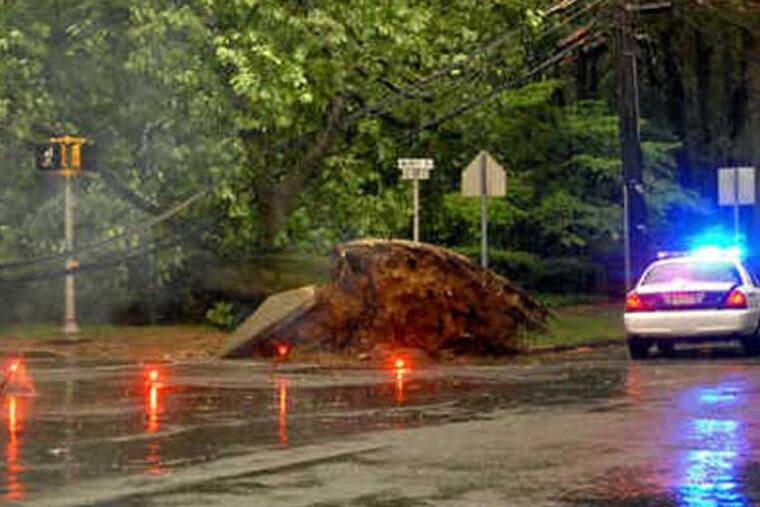PSE&G's 'Energy Strong' plan advances
Public Service Electric & Gas Co. announced Thursday that it had reached a $1.22 billion settlement in its "Energy Strong" proposal to harden New Jersey's energy grid, less than a third of what it proposed to spend last year.

Public Service Electric & Gas Co. announced Thursday that it had reached a $1.22 billion settlement in its "Energy Strong" proposal to harden New Jersey's energy grid, less than a third of what it proposed to spend last year.
"We're just pleased to get this thing going right now," Ralph Izzo, chairman of the utility's parent company, Public Service Enterprise Group, said during an earnings call Thursday with analysts.
PSE&G filed its $3.9 billion proposal in February 2013, four months after Hurricane Sandy devastated the region. The utility had sought approval to invest $2.6 billion during the initial five years, and $1.3 billion in the following five years, for work that would better protect its equipment from storms and help reduce outages in severe weather.
But the filing languished before the New Jersey Board of Public Utilities (BPU) for more than a year despite expressions of support from municipalities and unions that regard the proposal as an economic boost that would improve system reliability.
New Jersey's Rate Counsel, large industrial users, and environmental activists had opposed the proposal as too costly for ratepayers.
Opponents had also objected to PSE&G's request to pay the costs of the improvements through a customer surcharge rather than through a conventional rate proceeding. PSE&G argued that it would be fair to recover its investment as the projects were completed, rather than waiting several years for the "regulatory lag."
Under the agreement with the BPU staff, PSE&G will earn an authorized return on equity of 9.75 percent on the first $1 billion of investment based on an accelerated recovery mechanism. The company will seek to recover the remaining $220 million in a base rate case to be filed no later than Nov. 1, 2017.
Izzo said the program would add about 2 percent to a typical residential customer's bill - less than the 4.5 to 5.2 percent anticipated under the initial proposal. But the increase will be offset by several bill charges that are expiring in the coming years, and the net effect is that customer bills are expected to go down, he said.
Izzo said the pared-down program, which PSE&G plans to complete in three years, is an "important start" to hardening the utility's systems. He said nothing in the settlement precludes the company from returning to regulators later to request the remainder of the program.
If formally approved by the BPU commissioners, the company will make the following investments:
$620 million to raise, relocate, or protect 29 switching and substations that were damaged by water in recent storms.
$350 million to replace and modernize 250 miles of low-pressure cast-iron gas mains in or near flood areas.
$100 million to create redundancy in the system, reducing outages when damage occurs.
$100 million to deploy smart-grid technologies to better monitor system operations to increase the ability to more swiftly deploy repair teams.
$50 million to protect five natural gas metering stations and a liquefied natural gas station affected by Sandy or located in flood zones.